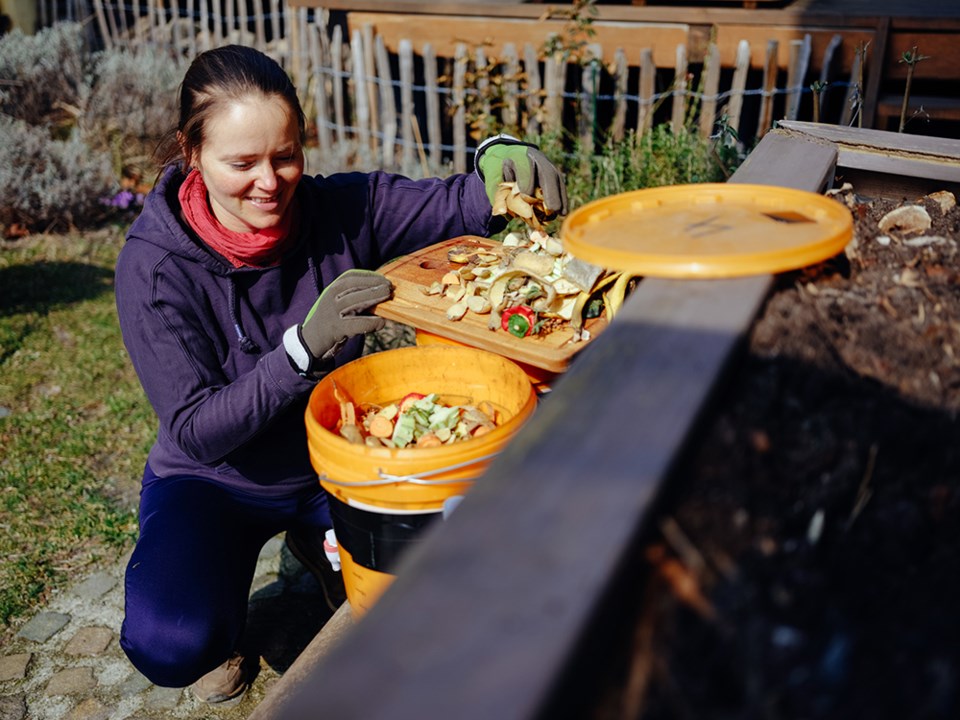The ground is frozen and apparently asleep. Bears, too. Who then, is going to eat your kitchen scraps?
While bears should never be invited to eat your compost, microbes should. In fact, they literally live for it. But in the hibernation of winter, all life slows down, even that in the soil.
A healthy composting system always includes plenty of microbes: the invisible life of the soil made up primarily of fungi, bacteria and yeasts. These have a fascinating interdependent relationship with plants. In fact, they actually feed each other.
Soil biologists have discovered that plants send 40 per cent of their photosynthetic energy down to their roots, where it is released as sugary carbohydrates. These attract microbes that then have a feast and leave behind their “waste,” which is rich in digested minerals and nutrients ready for the plants to uptake.
Gardeners know full well that good soil grows great food and flowers. Today’s soil, however, can be lacking in essential microbes because of treatment with chemicals or addition of essentially “dead” compost.
Fortunately, we can regenerate our soil while also keeping our kitchen scraps out of the landfill. To give your compost a kick start, add scraps that are alive with microbes.
The whey water that separates out on top of your yogurt is full of life. Kefir and rice water, too. Kombucha scobys are also great to chop up and add in; unpasteurized kimchi and sauerkraut as well.
Even if your compost pile is frozen, adding these in along with a carbon-rich amendment such as dried leaves, wood chips or untreated sawdust will help warm things up and break things down.
Those of you hesitant to walk out to your composter in the winter months might be looking for an indoor method of processing kitchen scraps. Enter Bokashi.
Initially practiced in Japan, Bokashi, meaning fermentation, is a simple two-part process of turning food into soil. Food scraps are chopped up and then sprinkled with a microbe-infused wheat germ that begins the process of cell-wall breakdown in your indoor bucket. The scraps actually smell great as they gradually ferment over a three-week period in an anaerobic environment, covered with a plate or plastic sheath.
Once fermented, you can either dig this into your garden at a depth of about six inches, or wait until the garden thaws and dig it in then. In another three weeks, with the help of the active microbes, the scraps will rapidly become indistinguishable from the soil.
Gardeners who have tested out this unusual way of managing their household food “waste” swear by it; the proof is in the size of the squash and deep green of their broccoli. Outdoor composters naturally attract microbes as well, worms and bugs that are happy to make a meal of your leftovers.
If you’d like to stay indoors this winter, you can create a worm bin, but beware that it is like having a few hundred tiny pets. Instructions for creating your own worm habitat are readily available online.
Finding the red wiggler worms to seed your bin with may be your biggest challenge. Contact Let’s Talk Trash to get tips on where to source these locally. Hint: a compost pile or horse manure may be a great start.
Whether indoors or out, we all know our food scraps are wasted when tossed into the appropriately named waste bin. Finding a method of turning your scraps into black gold can be a feel good winter project.
Let’s Talk Trash is qathet Regional District’s waste reduction education program. For more information, email [email protected].



